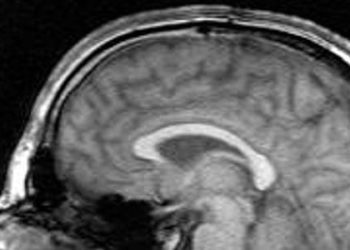Adjuvant treatment with programmed cell death receptor-1 inhibitor pembrolizumab is an effective adjuvant treatment for stage III/IV melanoma
1. Five-year disease-free survival was greater in patients who had ≤10% viable tumour or brisk tumour-infiltrating lymphocytes
2. Overall survival at five years was greater in patients with a major or complete pathological response to treatment as compared to the rest of the patient population
Evidence Rating Level: 2 (Good)
Study Rundown: Surgery is the mainstay treatment of stage III/IV melanoma with adjuvant treatment as a secondary consideration. This study investigated long-term outcomes for patients with stage III/IV melanoma receiving neoadjuvant and adjuvant programmed cell death receptor-1 (PD-1) inhibitors after surgical treatment. The primary outcome of this study was disease-free survival (DFS) and secondary outcomes included overall survival (OS) at 5 years and recurrence. DFS at 5 years was greater in patients with ≤10% viable tumour as compared to the rest of the study patients (75.0% vs. 63.6%). Five-year DFS was also higher in patients with brisk tumour-infiltrating lymphocytes (TILs) when compared with the outcomes for patients with non-brisk TILs (75.0% vs. 61.1%). There were a greater number of deaths in patients with limited pathological responses as compared to no deaths in those patients who had major or complete responses to study treatment. There were more deaths in patients with non-brisk TILs at 5 years (n=18), compared to no deaths for patients who had brisk TILs (n=12). Recurrence was evident in 10 patients. Two of the patients had major or complete pathological responses to treatment and the other eight were pathologic non-responders (pNR). The only distinguishing feature between patients who did and did not experience disease recurrence was that patients who did not have disease recurrence more often had an unknown BRAF gene mutation status. Limitations to this study include that the study population was small (n=30) and conducted in a single centre, potentially overestimating the strength of associations as well as potentially limiting the applicability to broader populations of patients with stage III/IV melanoma. However, the findings from the study is the longest follow-up of single agent neoadjuvant PD-1 inhibition in the melanoma field and confirms the role of neoadjuvant immunotherapy in this space. Overall, the results from this study support that the type of pathological response to neoadjuvant treatment of stage III/IV melanoma is potentially a useful proxy to determine disease prognosis and response.
Click to read the study in the Annals of Oncology
Relevant Reading: Personalized response-directed surgery and adjuvant therapy after neoadjuvant ipilimumab and nivolumab in high-risk stage III melanoma: the PRADO trial.
In-Depth [prospective cohort]: This study was a phase 1b, clinical trial evaluating survival parameters of 30 patients with resectable stage III/IV cutaneous melanoma receiving one dose of neoadjuvant pembrolizumab, surgical resection, and one year of adjuvant pembrolizumab. DFS at 5 years was 75.0% for patients with ≤10% viable tumour. This is in comparison to 63.6% for the rest of the study patients. For patients with brisk tumour-infiltrating lymphocytes (TILs), DFS at 5 years was 75.0% which was higher than for the rest of the patient population with non-brisk TILs (61.1%). For the 8 patients with a major pathological response, there were no deaths, whereas there was a 72.8% 5-year OS for the other 22 patients. For the 12 patients who had brisk TILs, there were no deaths, in comparison with the other 18 patients with non-brisk TILs who had a 72.8% OS at 5 years. In patients with recurrence of the disease, the median time was 3.9 years post-treatment in the ≤10% viable tumour group and 0.6 years in the ≥10% viable tumour group.
Image: PD
©2023 2 Minute Medicine, Inc. All rights reserved. No works may be reproduced without expressed written consent from 2 Minute Medicine, Inc. Inquire about licensing here. No article should be construed as medical advice and is not intended as such by the authors or by 2 Minute Medicine, Inc.







